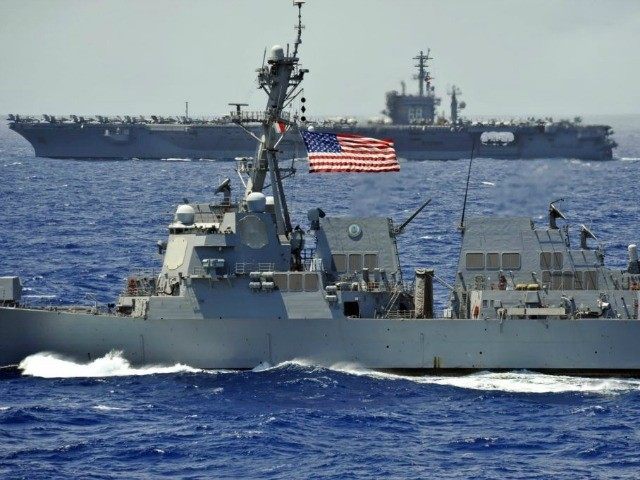The United States began its biennial Rim of the Pacific (RIMPAC) naval exercise off Hawaii on Monday, although the event was heavily scaled-down because of restrictions pertaining to the ongoing coronavirus pandemic.
The biennial event, which is typically the world’s largest naval exercise, will run from August 17 to 31, but will feature only around a third of the expected countries and a fifth of the usual personnel. However, U.S. 3rd Fleet Commander Vice Adm. Scott Conn insisted in a pre-recorded RIMPAC 2020 kickoff message that the exercise would still meet its goal of building “interoperability and trust” among Pacific military allies.
“Originally, RIMPAC 2020 had planned to include up to 30 countries, more than 50 ships and submarines, more than 200 aircraft, and 25,000 personnel – 4,000 of those ashore for operations and support functions. That would have been the largest RIMPAC to date,” Conn said in the video. “We have scaled that down to 10 nations, 22 ships, one submarine, and approximately 5,300 personnel, all at sea.”
He continued:
The flags you see behind me represent a formidable team of 10 navies from Australia, Brunei, Canada, France, Japan, New Zealand, Republic of Korea, Republic of the Philippines, Singapore, and the United States, all of whom will spend the next two weeks training through a series of events designed to improve our ability to operate together. This year we will focus solely on warfighting in the maritime domain, to include anti-surface and anti-submarine warfare, maritime interdiction operations, and robust live-fire events.
Despite the drills being scaled-down, this year’s exercise represents more geopolitical importance than ever amid the recent decline in relations between China, the U.S., and other Western allies. As well as the ongoing trade war, military tensions surrounding the independence of Taiwan, control over the South China Sea, the lack of progress on dismantling North Korea’s nuclear program, and overall U.S. national security have all contributed to the current febrile atmosphere.
RIMPAC 2018 involved 25 countries sending 45 ships, five submarines and around 25,000 personnel to Hawaii and Southern California for a much longer event that ran from late June to early August and involved multiple events such as the testing of new missiles, two sinking exercises and even an innovation fair featuring the latest military technology.
“RIMPACs bring like-minded navies together that are able to effectively work together during a time of crisis to ensure regional stability and security,” Conn added. “RIMPAC 2020 will be no exception in that regard, even as an at-sea only exercise.”
Follow Ben Kew on Parler, Facebook, or Twitter. You can email him at bkew@breitbart.com.

COMMENTS
Please let us know if you're having issues with commenting.